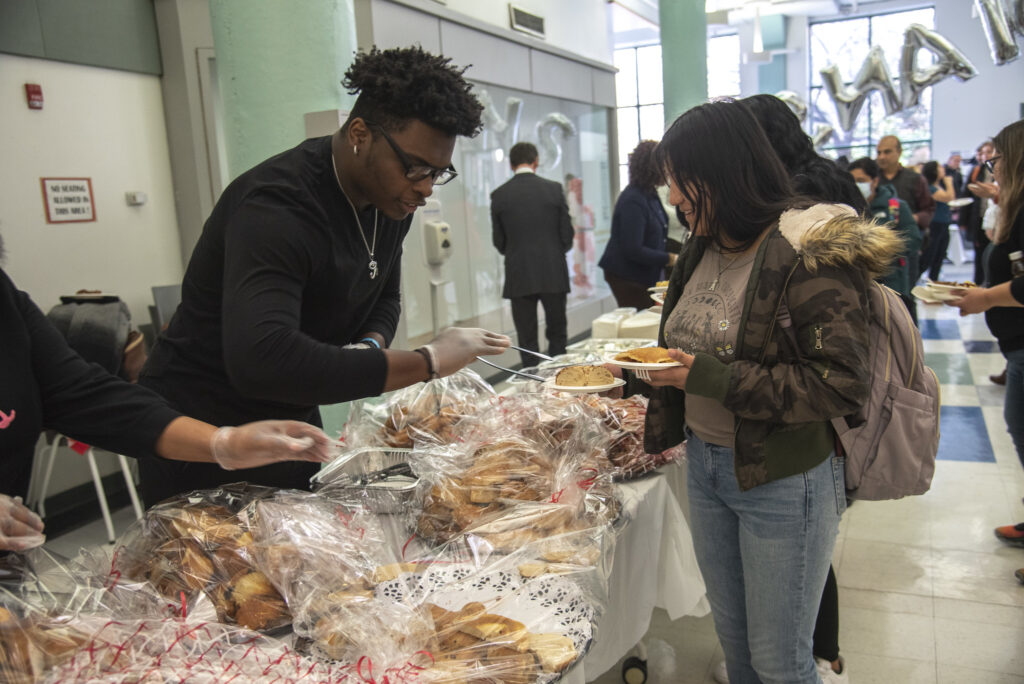
Lunch for Hongning Wei means standing in line in front of a vending machine. It is always the usual, a pack of potato chips and green tea.
She likes the taste but what she really likes is the price.
Wei is not alone.
Students are feeling the crunch of rising food prices and that is influencing their food choices on campus. Many say they are forced to become more budget conscious.
Tsering, who only wanted to use his first name, also a first-year student, is dismayed by the rising cost of take-out.
“Wherever I have my lunch, the price of food is unreasonable,” he says. This has limited his choices. Instead of splurging in restaurants, he prefers the discounted prices of the M-cafeteria in the college.
According to the Consumer Price Index of U.S. Bureau of Labor Statics, food prices nationwide had a 6.3 percent rise in 2021. According to the Food Price Outlook released by the United States Department of Agriculture, there would be an increase between 4.5 and 5.5 percent on the price of nearly every food item in 2022, in addition to existing price increases.
With rising costs and shrinking choices, many are making the extra effort to cook their own food.
For the five years that Hind El Gizuil worked at the Student Information Center, she rarely brought lunch from home. “Now I prefer to bring homemade meals for lunch due to preference and diet, as well as to save money in the process,” she said.
The Pandemic marked a shift for her. She felt squeezed.
“I prefer to bring my homemade foods and heat them with the microwave,” she says. Even when she is rushed, she would bring some mashed potatoes, but she avoids splurging on buying food from outside.
Economy is not the only factor influencing decisions. The pandemic had led to the closure of food joints around the campus. Even the existing ones have reduced menus and less options. Mask mandates also made eating out a challenge.
Although there are less restrictions for students and staff to enjoy their meals in the canteens of campus since Governor Kathy Hochul ended the state mask requirement in schools on March 2, 2022, the eateries and cafeterias still look deserted.
The pandemic and the inflation did not only affect students and staff preferences, but also the operating situation of cafeterias on campus.
MBJ’s cafeteria in M building reopened their storefront for in-person ordering in the Spring semester. Before that customers were not allowed to enter the storefront to select the food, instead, they could only order their food online.
Elly Santiago is the manager of MBJ Cafeterias. She said the cafeterias including E-atrium Café and C-Building Lobby Kiosk were all shut up in March 2020 along with the rest of the campus. “This measure was taken to prevent the pandemic from spreading but also had our considerations about the low passenger flow included,” she says.
She says that MBJ cafeteria reopened the C-Building Lobby Kiosk in September 2020 after former Governor Andrew Cuomo allowed a 25 percent capacity for restaurants to let customers eat in. E-atrium Café was reopened after about one year, in October 2021, offering Starbucks coffee products. M-Cafeteria was reopened in November of the same year.
Santiago shared her confusion and struggles when she designed to reopen M-Cafeteria during November 2021 with only online ordering available.
She said that they were unsure about students’ desire for food during the pandemic and whether online-only ordering would influence their choices.
“Because customers’ desire depended how much food we needed to make each day which, of course, depended how many people we need to employ and how much materials we need to prepare,” she adds.
Elly Santiago says she is still making predictions about food choices of students and staffs.